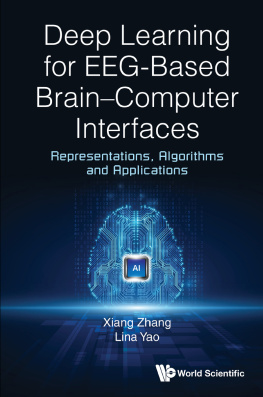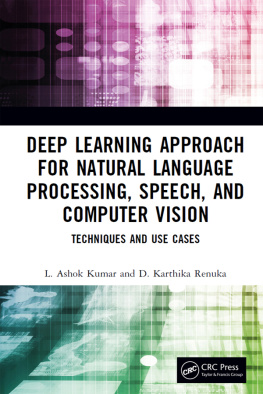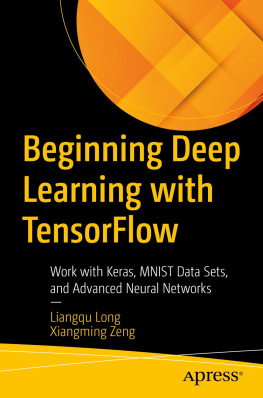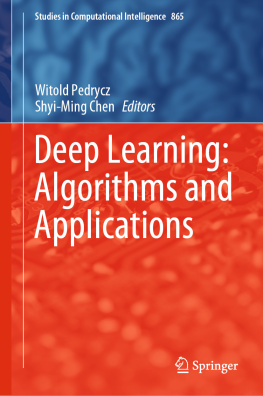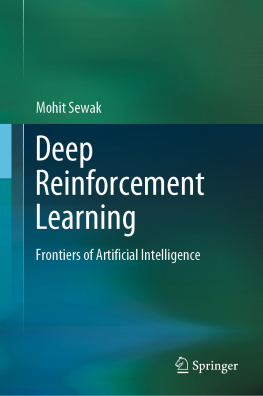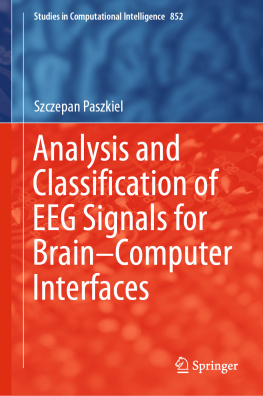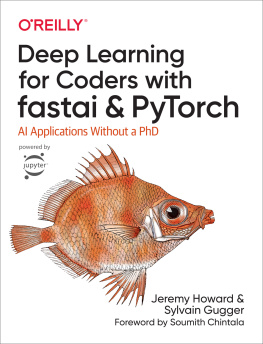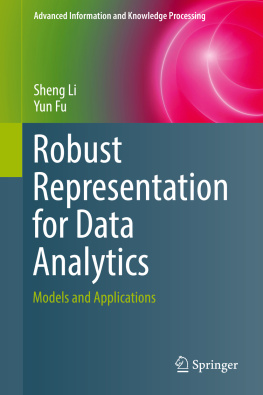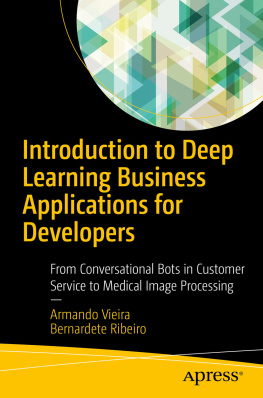Contents
Pagebreaks of the print version

Deep Learning for EEG-Based BrainComputer lnterfaces
Representations, Algorithms and Applications
Deep Learning for EEG-Based BrainComputer lnterfaces
Representations, Algorithms and Applications
Xiang Zhang
Harvard University, USA
Lina Yao
University of New South Wales, Australia

Published by
World Scientific Publishing Europe Ltd.
57 Shelton Street, Covent Garden, London WC2H 9HE
Head office: 5 Toh Tuck Link, Singapore 596224
USA office: 27 Warren Street, Suite 401-402, Hackensack, NJ 07601
Library of Congress Cataloging-in-Publication Data
Names: Zhang, Xiang, author. | Yao, Lina, author.
Title: Deep learning for EEG-based braincomputer interfaces : representations, algorithms and applications / Xiang Zhang, Harvard University, USA, Lina Yao, University of New South Wales, Australia.
Description: New Jersey : World Scientific, [2022] | Includes bibliographical references and index.
Identifiers: LCCN 2021024493 | ISBN 9781786349583 (hardcover) | ISBN 9781786349590 (ebook) | ISBN 9781786349606 (ebook other)
Subjects: LCSH: Brain-computer interfaces. | Machine learning.
Classification: LCC QP360.7 .Z43 2022 | DDC 612.8/20285--dc23
LC record available at https://lccn.loc.gov/2021024493
British Library Cataloguing-in-Publication Data
A catalogue record for this book is available from the British Library.
Copyright 2022 by World Scientific Publishing Europe Ltd.
All rights reserved. This book, or parts thereof, may not be reproduced in any form or by any means, electronic or mechanical, including photocopying, recording or any information storage and retrieval system now known or to be invented, without written permission from the Publisher.
For photocopying of material in this volume, please pay a copying fee through the Copyright Clearance Center, Inc., 222 Rosewood Drive, Danvers, MA 01923, USA. In this case permission to photocopy is not required from the publisher.
For any available supplementary material, please visit https://www.worldscientific.com/worldscibooks/10.1142/Q0282#t=suppl
Typeset by Stallion Press
Email:
Printed in Singapore
Preface
Research on brain signals is fascinating; its like controlling the world with your mind. One big challenge obstructing your superpower is the ineffectiveness and inaccuracy of brain signal decoding. Fortunately, in recent years, powerful deep learning algorithms have achieved great success in a broad field of research through excellent high-level representation learning. In this book, we present how deep learning techniques enhance braincomputer interface (BCI) research.
To begin with, the book presents a new taxonomy of BCI signal paradigms according to the acquisition methods and systemically introduces the fundamental knowledge of deep learning models. Moreover, several guidelines for the investigation and design of BCI systems are provided from the aspects of signal category, deep learning models, and applications.
Special attention has been given to the state-of-the-art studies on deep learning for EEG-based BCI research in terms of algorithms. Specifically, this book introduces a number of advanced deep learning algorithms and frameworks aimed at several major issues in BCI including robust brain signal representation learning, cross-scenario classification, and semi-supervised classification.
Furthermore, several novel prototypes of deep learning-based BCI systems are proposed which shed light on real-world applications such as authentication, visual reconstruction, language interpretation, and neurological disorder diagnosis. Such applications can dramatically benefit both healthy individuals and those with disabilities in real life.
Xiang Zhang, Lina Yao
June 2020
Contents
PART 1
Background
Chapter 1
Introduction
1.1 Background on the BrainComputer Interface
BCI systems translate human brain patterns into messages or commands for transmission to the outer world (Lotte et al., 2018). BCI underpins many novel applications that are important in daily life, especially to individuals with psychological/physical or disabilities. On one hand, BCI can assist the disabled, the elderly, and people with limited motion ability (e.g., people with muscle diseases) in controlling wheelchairs, home appliances, and robots. For instance, a patients brain signals can control household appliances through a BCI system. On the other hand, ordinary individuals can enjoy enhanced entertainment and security when brain wavesbased techniques are involved (Zhang et al., 2018g). Generally, a BCI system enables bidirectional communication between the human brain and the computer. However, as introduced in Abdulkader et al. (2015) and Roy et al. (2019), systems based on brain signal analysis (such as mental disease diagnosis, emotional computation, sleeping state scoring, etc.) can also be considered as more generalized forms of BCI. This book investigates the generalized BCI systems to provide a more comprehensive understanding of and scope for BCI systems.
shows the general paradigm of a BCI system, comprised of five key components: brain signal collection, signal preprocessing, feature engineering, and smart equipment. First, human brain signals are collected from humans and sent to the preprocessing component for denoising and enhancement. Next, the discriminating features are extracted from the processed signals and sent to the classifier for further analysis. The classifier converts the decoded brain signals into digital commands to control the smart equipment and respond to the user.

Fig. 1.1: General workflow of braincomputer interface system.
The collection method, which is the first step of the procedure, is determined by the type of signal. For example, collection of EEG signals, which measure the voltage fluctuation resulting from ionic current within the neurons of the brain, requires placing a series of electrodes on to the scalp to record the electrical brain activity. Since the ionic current generated within the brain is measured at the scalp, intervening matter (e.g., the skull) greatly decrease the signal quality. Therefore, brain signals are usually preprocessed before feature engineering to increase the Signal-to-Noise Ratio (SNR). The preprocessing component comprises multiple steps such as signal cleaning (e.g., smoothing the noisy signals or resolving the inconsistencies), signal normalization (e.g., normalizing each channel of the signals along the time axis), signal enhancement (e.g., removing direct current), and signal reduction (presenting a reduced representation of the signal).
Feature engineering refers to the process of extracting discriminating features from the input signals using domain knowledge. Traditional features are extracted from the time domain (e.g., variance, mean value, kurtosis), frequency domain (e.g., fast Fourier transform), and time frequency domains (e.g., discrete wavelet transform), and analyzed to enrich distinguishable information regarding user intention. Feature engineering is highly dependent on the domain knowledge. For example, biomedical knowledge is required to extract the features from brain signals which indicate epileptic seizures. Additionally, manual feature extraction is also time-consuming and may be inaccurate. Recently, automatic extraction of distinguishable features through deep learning has become a more attractive option.

